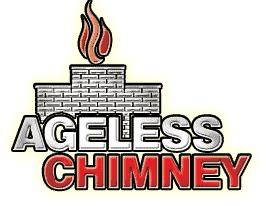Chimney Services in Manhattan Valley, NY
What our clients say




Read About Us
Browse Fireplace Services
contact us
Professional Chimney Services in Manhattan Valley, NY

Why Choose Professional Chimney Services?
Chimney maintenance is paramount for both safety and efficiency within your home. Opting for professional chimney services guarantees a clean, safe, and properly functioning chimney. Ageless Chimney, serving Manhattan Valley, NY, offers expert services customized to individual needs, ensuring homeowners peace of mind and a well-maintained chimney.
With our tailored approach, you can trust that your chimney is in capable hands, providing you with the reassurance of a safe and efficient home environment.
Experienced Technicians
Our team of certified professionals brings years of experience and expertise to every job, ensuring high-quality results. With a commitment to excellence, we prioritize customer satisfaction and strive to exceed expectations with every chimney maintenance service.
Customer Satisfaction
We prioritize our clients in Manhattan Valley, NY, and strive to exceed expectations with every service we provide. Our dedication to customer satisfaction drives us to continuously refine our techniques and stay updated on industry standards, ensuring that our clients receive the best possible service experience.
Affordable Pricing
Ageless Chimney offers competitive rates without compromising on quality, making top-tier chimney services accessible to all. Our transparent pricing policy ensures that homeowners in Manhattan Valley, NY can benefit from our exceptional chimney services without any hidden costs or surprises.

Our Comprehensive Chimney Services
At Ageless Chimney, we offer a wide range of chimney services to residents in Manhattan Valley, NY, and New York City. Our services include chimney inspections, cleanings, repairs, and installations. We use the latest tools and techniques to ensure your chimney is in top condition. Our inspections are thorough, identifying any potential hazards or issues that could affect the safety and performance of your chimney.
Regular chimney cleaning is essential for maintaining a safe and efficient fireplace. Over time, creosote and other debris can build up inside the chimney, increasing the risk of chimney fires. Our expert team provides thorough cleaning services to remove these dangerous buildups, ensuring your chimney operates safely and efficiently. We recommend scheduling a professional cleaning at least once a year, especially if you use your fireplace frequently.
In addition to cleaning and inspections, Ageless Chimney offers comprehensive chimney repair services. From minor cracks to major structural damage, our experienced technicians can handle any repair job with precision and care. We also specialize in chimney installations, ensuring that your new chimney is built to last and complies with all local regulations. Whether you need a new chimney or just some repairs, we’ve got you covered.

Benefits of Regular Chimney Maintenance
Regular chimney maintenance offers numerous benefits for homeowners in Manhattan Valley, NY, and New York City. One of the most important benefits is enhanced safety. By preventing the buildup of creosote and other flammable materials, regular maintenance reduces the risk of chimney fires. A well-maintained chimney also ensures proper ventilation, which is crucial for the safe operation of your fireplace or heating system.
Another significant benefit of regular chimney maintenance is improved heating efficiency. When your chimney is clean and in good repair, your fireplace or stove can burn fuel more efficiently, providing more heat with less fuel. This not only keeps your home warmer but also saves you money on energy bills. In Manhattan Valley, NY, where winters can be harsh, an efficient heating system is essential. Regular chimney maintenance not only enhances safety but also ensures improved air quality within your home by preventing the buildup of harmful pollutants.
Finally, regular chimney maintenance helps to preserve the structural integrity of your chimney. Over time, exposure to heat, moisture, and weather conditions can cause wear and tear on your chimney. By addressing minor issues before they become major problems, you can extend the life of your chimney and avoid costly repairs. Trust Ageless Chimney to provide reliable and thorough maintenance services, ensuring your chimney remains in optimal condition year-round.
Have a question?
Manhattan Valley is a neighborhood in the northern part of Upper West Side in Manhattan, New York City. It is bounded by West 110th Street to the north, Central Park West to the east, West 96th Street to the south, and Broadway to the west.
Local Resources
Useful links for Manhattan Valley, NY
- Open a Manhattan Valley, NY map
- Find the Manhattan Valley, NY United States Post Office
- Locate nearby Manhattan Valley, NY pharmacies
- View the current Manhattan Valley, NY weather report
- Browse a list of Manhattan Valley, NY public and private schools
- Manhattan Valley, NY is located in New York county in New York State
